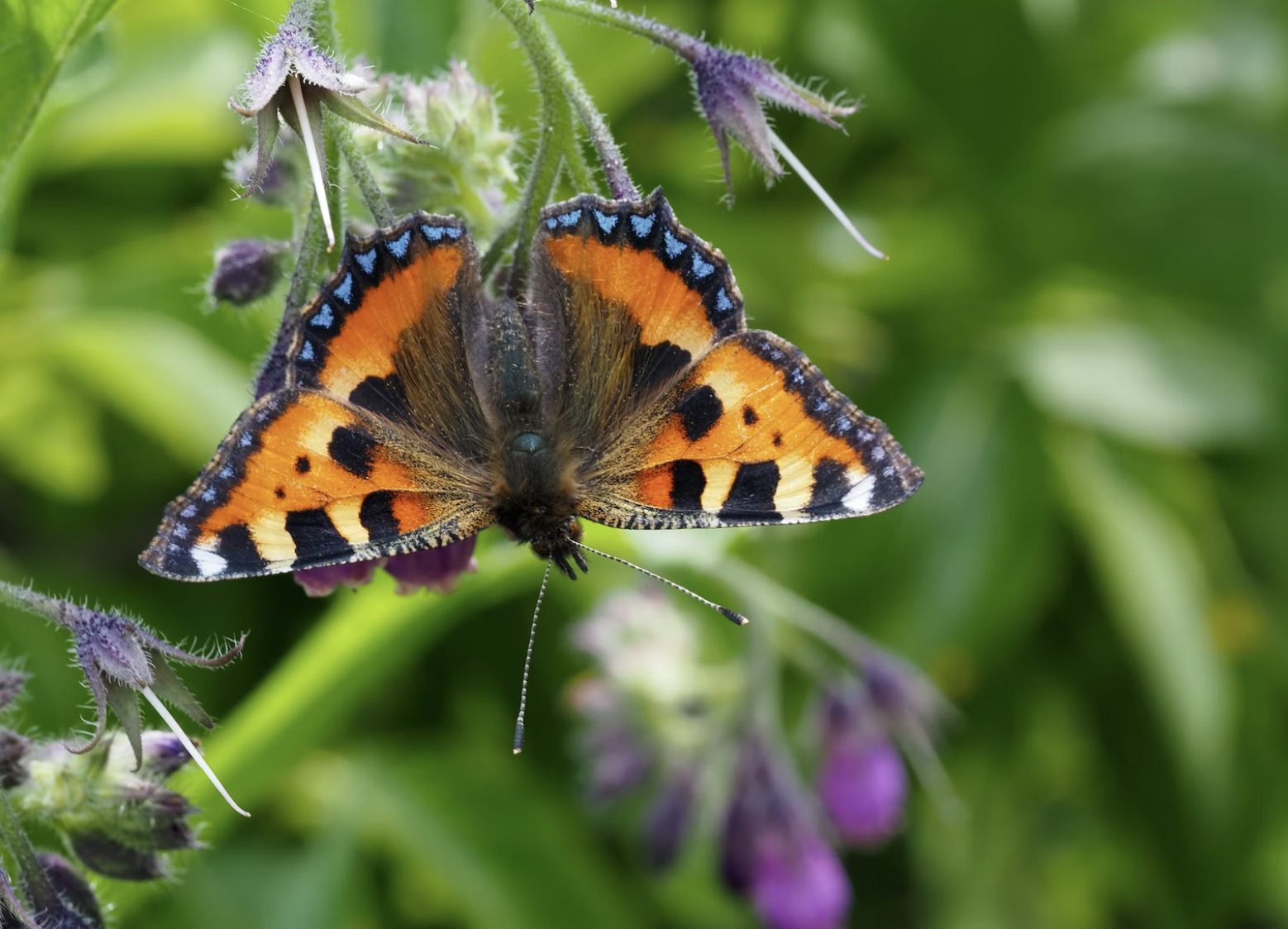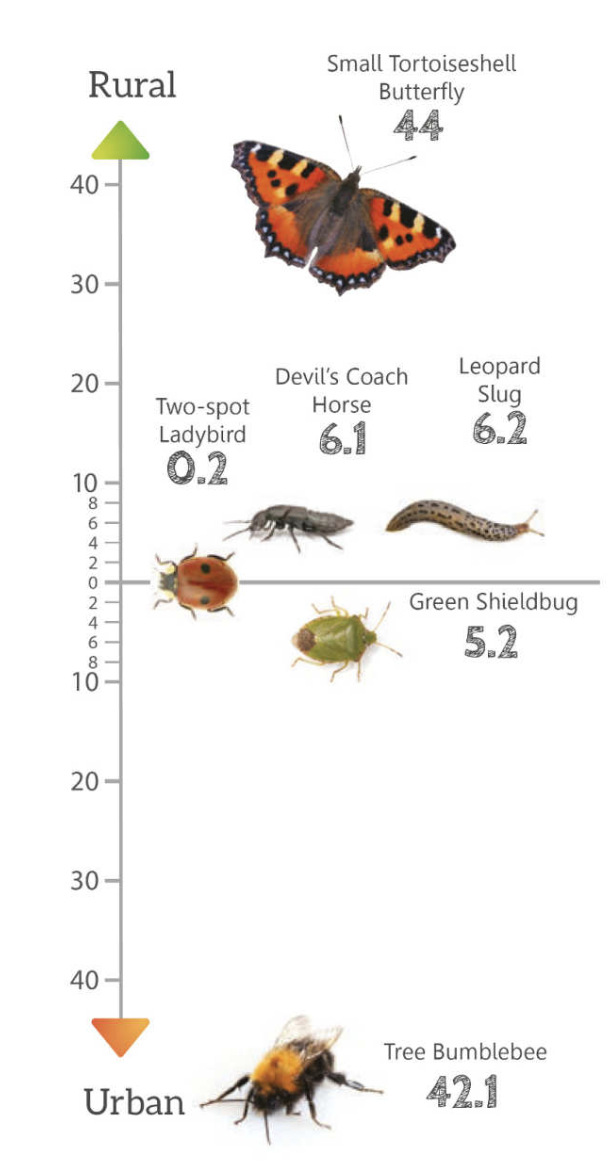Using OPAL surveys to explore the effects of urbanisation on invertebrate biodiversity in the UK

This case study is part of theSEI Urban Toolbox for Liveable Cities which has been developed by theSEI Initiative on City Health and Wellbeing. The Urban Toolbox isa collection of tools, developed within SEI or in coordination with SEI,aimed at supporting planning and decision-making for improving the health, well-being and resilience of city residents and urban systems more broadly.It demonstrates how citizen science approaches, like the OPAL survey, can be used to investigate the relationships between biodiversity and urbanisation.
Introduction
Invertebrates have been termed ‘the little things that run the world’. They are a vital part of all ecosystems, and perform a huge range of essential functions, such as pollination or breaking down organic matter. An incredible 96% of all known animals are invertebrates. Without them the world would be a very different place. They really do count.
The objective of the OPAL Bugs Count Survey was to investigate the effect of urbanisation and habitat characteristics on the abundance of 16 broad invertebrate groupings, such as snails, earthworms, butterflies and moths, and centipedes. The survey also sought to investigate six particular invertebrates, each of which were selected in order to investigate a particular question (e.g. How far north and west has the Tree Bumblebee spread since arriving in the UK?) and because they are relatively easy to identify to species level. As it was a citizen science project, the other key objective was to raise awareness about invertebrates.
This Urban Toolboxcase study is an abridged version of the original text, which can be downloaded from the right-hand column. Please access the original text for more detail, research purposes, full references, or to quote text.
Method
Survey design:
The survey was divided into four timed activities:
- Hunting for ground-living invertebrates on soft ground surfaces like soil, short grass and among fallen leaves and twigs
- Searching for invertebrates on human-made hard surfaces like paving, fences and the outside of buildings
- Looking for invertebrates on plants, including long grass, flowers, shrubs and trees
- Looking out for the six Species Quest bugs throughout the three activities listed above
The Bugs Count survey was designed in a way that reduced barriers to participation – not requiring any specialist equipment, and with the ability to be conducted in almost any environment. It was designed to produce scientifically useful results and be easy to do, requiring no previous identification experience. Consequently, almost anyone of any age and experience could participate.
This approach offers three important advantages over surveying by professionals:
- Firstly, data can be gathered over larger scales of space and time, including from areas otherwise difficult to study, such as private property.
- Secondly, members of the public can gain a better understanding of their local environment and their relationship to it.
- Thirdly participants can gain an understanding of how the process of scientific investigation is carried out, equipping participants with new skills and empowering them with a role within the scientific process.
Low barrier to entry citizen science surveys are perhaps best suited to scoping broad trends that can then be explored in more detail by professional scientists or non-professionals with more experience.
Collaborating with natural history organisations:
This survey was led by the Natural History Museum, London. The resource was designed and printed by the Field Studies Council who had access to excellent quality images. If you wanted to develop a similar survey for your country, start by reaching out to a national or regional museum for help. You may also have one or more ‘Natural History Society’ organisations who could help. Environmental education organisations might also be interested.
Key findings
The OPAL Bugs Count data was used to explore the effects of urbanisation and habitat characteristics on invertebrate diversity (Bates et al.,2015). Key findings include:
- Of the bugs found on soft surfaces (Challenge 1), invertebrate community composition was distinctly different between parks, gardens, woodlands and grasslands.
- Gardens typically had more detritivores (things that eat dead plant material) (particularly woodlice); parks and grassland habitats were associated with greater numbers of pollinators; and woodlands typically had higher numbers of herbivores and predators.
- Overall, parks, grasslands, and woodlands had a greater richness (number) of invertebrate species than gardens.
- Of the bugs found on hard surfaces (Challenge 2) – similarly to soft surfaces – there were distinct differences in the composition of invertebrate communities in each of the four habitat types.
- Gardens were associated with the highest numbers of invertebrates and the greatest number of predators; grasslands typically had higher numbers of detritivores; and woodlands had distinctly higher numbers of beetles.
- A statistical analysis (Chi-squared test) of‘Species Quest’ data showed species-specificrelationships with urbanisation.
- Of particular note, the Small Tortoiseshell Butterfly (Aglais urticae) was strongly associated with rural study sites, whereas the Tree Bumblebee (Bombus hypnorum) was strongly associated with urban environments.

Overall, Species Quest species showed species-specific relationships with urbanisation, but broad taxonomic groups did not show significant relationships with urbanisation. The latter were instead influenced by habitat type and microhabitat availability.
Conclusion
The OPAL Bugs Count survey highlights how a citizen science approach, with low barriers to participation, can generate data that can be further explored by researchers to identify the potential influences of urbanisation; in this case on invertebrate biodiversity. It also had high levels of participation, particularly from school and community groups.
Although the specific survey is not applicable to countries outside of the UK, the OPAL survey approach and design can be used as inspiration in different contexts to increase knowledge on and awareness of the impacts urbanisation is having on the natural world.
Suggested Citation:
For the report:
OPAL (2016). OPAL – Exploring Nature Together: Findings and Lessons Learnt.Available at: https://www.imperial.ac.uk/media/imperial-college/research-centres-and-groups/opal/Findings-and-Lessons-Learnt-Report—2016-compressed.pdf
For the journal paper:
Bates, A.J., Lakeman Fraser, P., Robinson,L., Tweddle, J.C., Sadler, J.P and West, S.E., Norman, S., Batson, M. and L. Davies (2015). The OPAL bugs count survey: exploring the effects of urbanisation and habitat characteristics using citizen science. Urban Ecosystems, 18, 1477–1497, https://doi.org/10.1007/s11252-015-0470-8
(0) Comments
There is no content